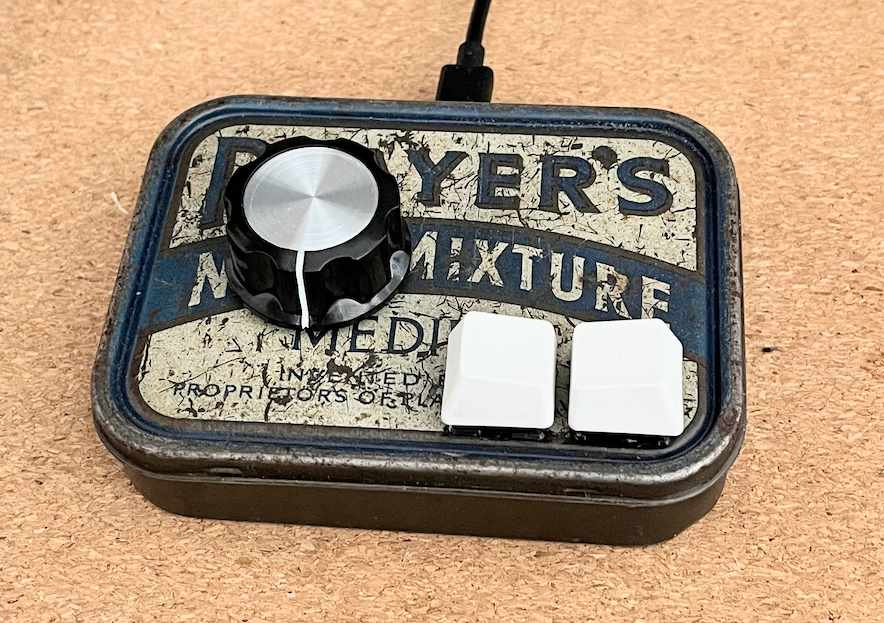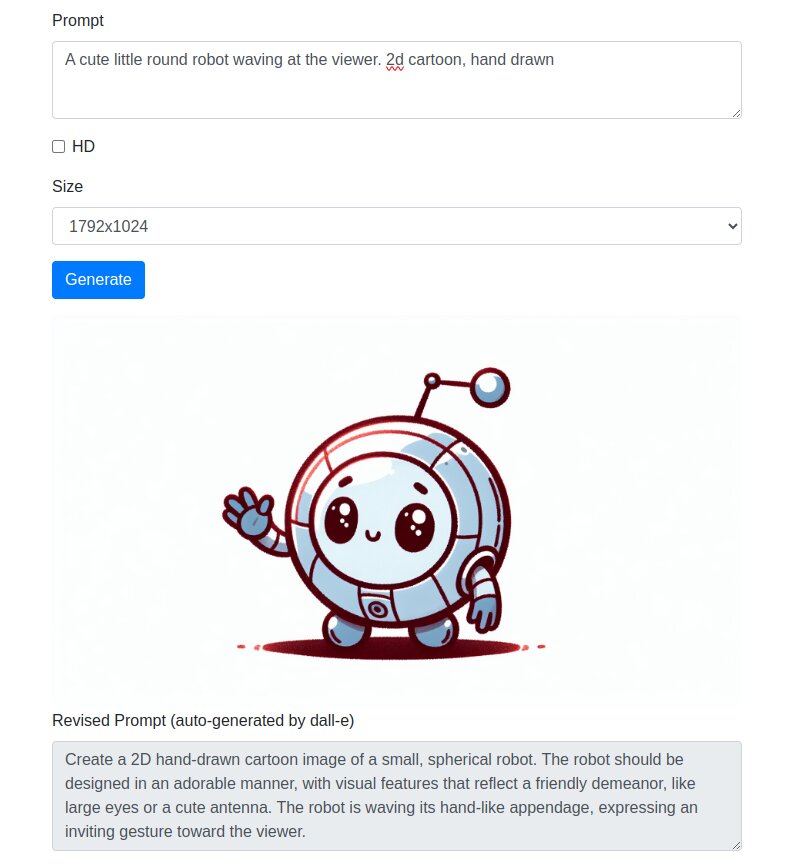Recently, I’ve been working on a few small but fun projects. As usual it’s mostly about software, but there is a bit of (light) embedded too this time! These involve using MicroPython for a hardware project, creating a user-friendly interface for DALL-E, and setting up a self-hosted music streaming solution.
USB Volume Knob with CircuitPython
I created a volume/media key USB controller for my desktop using MicroPython and a ProMicro microcontroller. This small project was my first experience with CircuitPython, and I absolutely loved it. I used a bootleg ProMicro based on the RP2040 microcontroller to build a “proper” physical volume knob and media buttons, which I enclosed in an old tin box I found at a thrift shop.
Features
- Volume Control: The knob allows you to control the volume of your device.
- Play/Pause: A short press on the knob will play or pause the current track.
- Next/Previous Track: Pressing the previous and next buttons will skip to the previous or next track.
The simplicity and functionality of CircuitPython made this project really fun. Using a “normal” filesystem and a Python REPL on your micro-controller fells like having superpowers (I remember spending hours trying to flash PICs at uni). You can check out the code and detailed instructions on my GitHub page.

Photo of the Device
MicroDallE: A Simple UI for DALL-E
I created a simple web-based UI for DALL-E called MicroDallE. This project is as a web server that generates an image based on a user-input prompt, using DALL-E 3 from OpenAI. It was primarily an experiment to see how far I could push the capabilities of ChatGPT for coding, and it even helped write the Readme! It isn’t perfect by any means but it still managed to speed the development time.
Features
- Image Generation: Enter a prompt, and the server creates an image using DALL-E 3.
- Optional Local Save: You can optionally save each generated image with its prompt for your records. I wanted to add that feature because each generation cost money, and I didn’t to waste it by mistake.
The project was developed using Python and Flask. For more details, you can visit the GitHub repository.

Screenshot of MicroDallE
Self-Hosted Music Streaming
I decided to stop using Spotify for music streaming and instead built and self-hosted my own music collection. It’s really pleasant to know that my music collection won’t become unavailable. When I browse my Spotify favorites, I often see tracks that have disappeared, and I may never hear them again.
Setup
- Backup: All my music is backed up in S3 Glacier, using a daily cronjob.
- Management: The collection is organised using Beets, which handle tagging, covers, and maintaining the filesystem.
- Streaming: Navidrome serves the music, making it accessible from anywhere in the house (internal network only).
- Hosting: My Raspberry pi that I already use for homeassistant. With the new “Boot from USB” feature the reliability is pretty good, there are no SD cards involved with an external SSD.